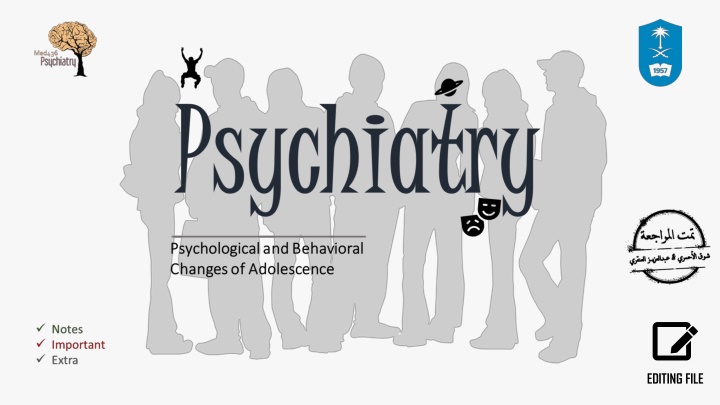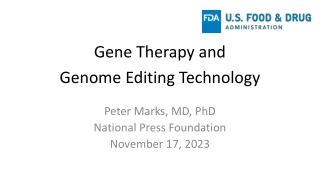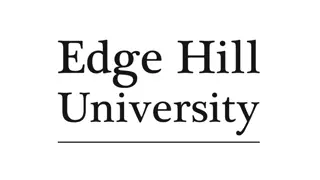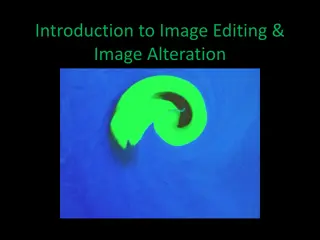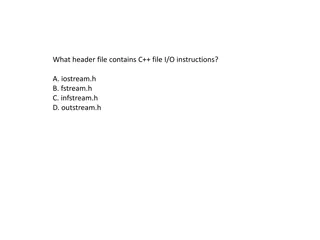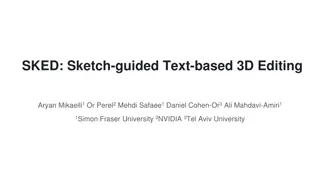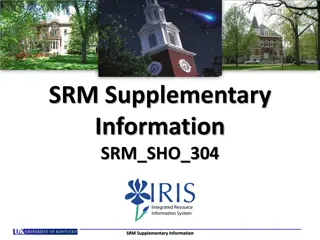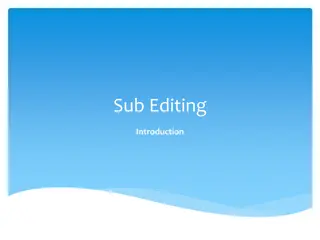Editing File: A Comprehensive Guide to File Management
Dive into the world of file editing with this comprehensive guide. Learn how to organize, modify, and save files efficiently. Explore various tools and techniques to enhance your editing skills and streamline your workflow. Whether you are a beginner or an experienced user, this guide will help you master the art of file management.
Download Presentation

Please find below an Image/Link to download the presentation.
The content on the website is provided AS IS for your information and personal use only. It may not be sold, licensed, or shared on other websites without obtaining consent from the author.If you encounter any issues during the download, it is possible that the publisher has removed the file from their server.
You are allowed to download the files provided on this website for personal or commercial use, subject to the condition that they are used lawfully. All files are the property of their respective owners.
The content on the website is provided AS IS for your information and personal use only. It may not be sold, licensed, or shared on other websites without obtaining consent from the author.
E N D
Presentation Transcript
Objectives: Objectives: 1. Know the adolescence definition. 2. Know the physical changes in adolescence. 3. Know the behavioral changes in adolescence. 4. Know the emotional changes in adolescence. 5. Know the cognitive changes in adolescence. 6. Know the social changes in adolescence.
What is Adolescence? What is Adolescence? o Adolescence is a period of global & pervasive changes and not a matter of developmental crisis. o Most of adolescents pass through it smoothly. o Averagely, it expands between 12 & 20 year of age. o The period of adolescence lasts till the individual becomes a young man or woman. Adolescence Adolescence Some people think that adolescence is a crisis and all kind of inappropriate behaviors must happen during this period and all teens are a potential danger but this period s a total normal time of any human life in which we experience many unstable changes that can affect us in many ways (Transitional period from childhood to adulthood). When it becomes hard on the family then it is considered abnormal. Adolescence needs a mutual understanding between parents and the adolescent. Psychological changes of adolescence occurs before physical changes by 2-1 year.
WHO definition of Adolescence: WHO definition of Adolescence: o The World Health Organization (WHO) defines adolescents as those people between 10 and 19 years of age. o The great majority of adolescents are, therefore, included in the age-based definition of child , adopted by the Convention on the Rights of the Child, as a person under the age of 18 years. o Other overlapping terms used in this report are youth (defined by the United Nations as 15 24 years) and young people (10 24 years), a term used by WHO and others to combine adolescents and youth. Adolescence Adolescence Context of Adolescent development: Context of Adolescent development: (Those are the factors that can affect adolescence either in good way or bad way) Peers and Friends School Media Family Family has the upper hand in influencing the adolescent and it is the main factor. Any defect in the role of parents will create a gap that can be filled by wrong factors and bad influence (Media most common). Understanding those factors can help you to deal better with your adolescent.
Adolescence can be associated with: Adolescence can be associated with: Adolescents can show inappropriate behavior sometimes and that s normal. Some are as following: (These signs resemble the drug abuse warning signs) o Withdrawal. Adolescence Adolescence o Moodiness. o increased family conflict. o Argumentativeness. o over-reactivity to criticism. o sloppiness in appearance. o spending time isolating in room. o poor attitude. o Disrespect. o loss of interest in family activities.
Physical Development Physical Development (Physical development affects directly on behavioral and psychological development) Primary sexual characters Secondary sexual characters - . Puberty Physical Development Physical Development . . Fast & disproportional growth Increased hormonal release Health status . . , It causes physical and mood changes. ,
Psychological consequences of physical changes: Psychological consequences of physical changes: o Embarrassment (Specially girls) ( o Sensitivity to criticism (Specially boys) Physical Development Physical Development ) o social isolation ) ( o Sadness ) ( o irritability
Cognitive Development Cognitive Development Thinking Memorizing :( - Cognitive Development Cognitive Development Identity (Identity crisis) (Starts to doubt themselves) Attention span & concentration . Idealism IQ & special talents . Day-dreams ) . ( Perception & deep meanings . Independence
Piaget Piaget s Four stages of Cognitive Development s Four stages of Cognitive Development (Prof. Fatima said this is EXTRA and it is not in your objectives) Stage Description Age Range Cognitive Development Cognitive Development An infant progresses from reflexive, instinctual action at birth to the beginning of symbolic thought infant constructs an understanding of the world by coordinating sensory experiences with physical actions. , , .) ) ( . The Sensorimotor Birth to 2 years ( The child begins to represent the world with words and images reflect increased symbolic thinking and go beyond the connection of sensory information and physical action. ( ) Preoperational 2 to 7 years The child can now reason logically about concrete events and classify objects into different sets. Concrete operational 7 to 11 years The adolescent reasons in more abstract and logical ways. Thought is more idealistic. Formal operational 11 to 15 years Difference between Concrete and Abstract: o Concrete : o Abstract : . ) (
Social Development Social Development Relationship with peers Relationship with parents ) Social relationship during adolescence . . ( Social Development Social Development ) ( Quote Quote The conflict between the need to belong to a group and the need to be seen as unique and individual is the dominant struggle of adolescence Jeanne Elium .
Emotional Development Emotional Development (This development is affected by both social and cognitive development) Extreme & inconsistent Impulsivity & recklessness . Emotional Development Emotional Development , Looking for self-assertion Anger & easily provocation Authority resistance Critical comments ! Love & romance ( )
Relationship with parents undergo 3 stages: Points illustrated by Prof. Fatima Points illustrated by Prof. Fatima During early adolescence (misunderstanding and many problems and fights between the adolescent and his/her parents) (Feeling of independency). During middle adolescence (Unsteady relationship) ) Late adolescence (Realizing that his/her parents were helping and the relationship grows better). ( Relationships related to love and romance: : ) ( ( ) ( ) .) (
NASCAR Metaphor: NASCAR Metaphor: ) . ( Faulty Brake System: Immature inhibitory mechanisms in PFC (pre frontal cortex) Big engine: Maturing bodies , independence striving Teen Brain Teen Brain Poor driver: Immature PFC (Pre frontal cortex) and judgment High Octane Fuel: Hormones : , , , .
Skills needed preadolescence: Skills needed preadolescence: ) ( Preparation: Values, Self-discipline, Taking responsibility . . Resilience ) ( Understanding Skills Skills Friendship/Love expression Respect Social Skills
o Remember your own teen vulnerabilitiesit will enhance your empathy. Take Home Message Take Home Message o Normal adolescent development is usually messy so you ll hear about messy behaviors and see them too even when they are healthy! o A comprehensive teen, parent, and social system review is the only way to evaluate many of the problems you are consulted about (e.g. drugs, depression, etc). o Most morbidity and mortality among adolescents has psychosocial/behavioral components, so focusing just on medical issues is not an option. o Because teens are vulnerable, fascinating and challenging, they can be among your most rewarding patients when you connect with them in a genuine way!
(Don t Skip this!!) t Skip this!!) Assess the big picture of a teen s life Appreciate that diversity includes many domains Find something in the teen to appreciate Summary (Don Be curious In Summary Remember your own vulnerable teen moments Be authentic, humble and sincere In
4-A 10 years old boy starts to show unusual anger when his parents ask him to do something. According to this brief history, what could be the cause behind his sudden change of mood? A) Early onset of puberty B) Such behavior is normal to occur prior to physical changes of puberty C) Peer influence and lack of family attention D) Drug abuse 1-A 17 years old girl was referred to Emergency because of an attempt of suicide. After talking to her, she stated that her parents are divorced and one of her friends advised her to take some drugs to let go of her depression. According to factors influencing adolescents development, what could be true? A) Media can have the upper hand of influence B) Family support defect can lead to bad peer influence C) Lacking of values and absence of one of parents can confuse a teen when comes to judging. D) Her attempt of suicide is due to withdrawal symptoms Test Yourself!! !! Test Yourself 2-Which of the following is false regarding cognitive development? A) Memorizing is the best during childhood B) Concentration is interrupted by day-dreams in adolescence C) IQ level increases with adolescence D) Breaking laws in adolescence can be due to deep interpretation of orders 5-The best definition of Adolescence is: A) Low levels of androgens can be detected during this period B) Transitional period from childhood to adulthood characterized by many unstable changes C) It a crisis and family must seek a psychiatrist D) It expands between 16 and 30 year of age 3-Which of the following is important to avoid bad peer influence? A) Showing love and support from family B) Isolation of teen from contacting different people C) Controlling the content of social media D) Punishment if a teen showed bad behavior 6-Which of the following can cause embarrassment to an adolescent? A) Low body weight B) Axillary hair C) Mood swings D) Love thoughts Answer key: 1:B&C 4:B 5:B 2:C 3:A 6:B
WHO definition of Adolescence The World Health Organization (WHO) defines adolescents as those people between 10 and 19 years of age. Context of Adolescent development Family Peers and friends School Media Physical Development Puberty Primary sexual characteristics Secondary sexual characteristics Summary Summary Increased hormonal release Fast & disproportional growth Health status Psychological consequences of physical changes Embarrassment sensitivity to criticism social isolation Sadness irritability Cognitive Development IQ & special talents IQ :(doesn't change a lot) Memorizing Day-dreams Attention span & concentration Emotional Development Extreme & inconsistent Impulsivity & recklessness Looking for self-assertion Authority resistance Skills needed preadolescence Preparation: Understanding Friendship/Love expression Values, Self-discipline, Taking responsibility
Everyone thinks of changing the world, but no one thinks of changing himself Team Leaders: Team Leaders: Mohammed Habib & Aseel Badukhon " " . Reference: Doctors notes and slides 436psychiatry Your feedback? @Psychiatry436 4 3 6 p s y c h i a t r y Y o u r f e e d b a c k ? @ P s y c h i a t r y 4 3 6
